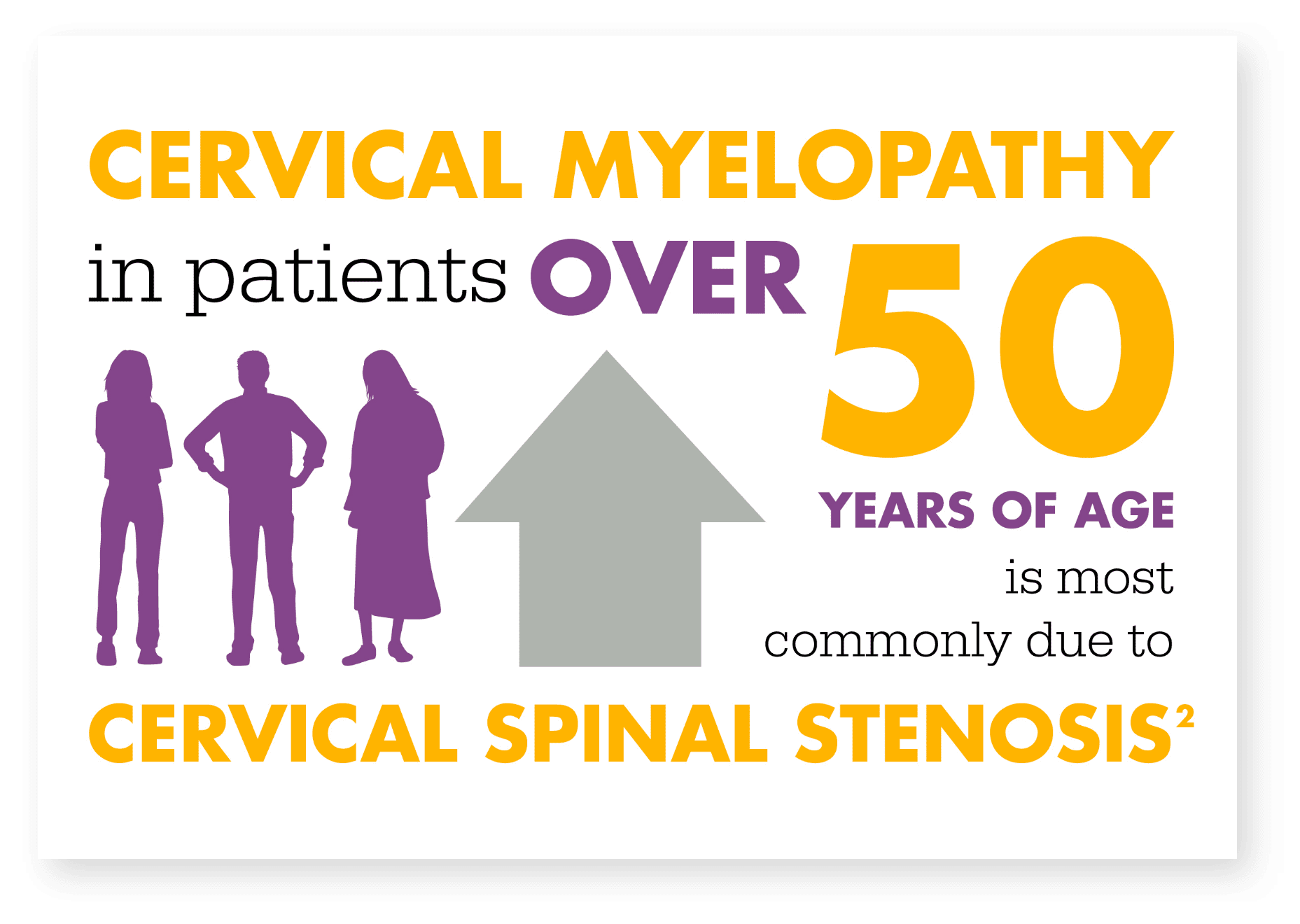Cervical stenosis is a narrowing of the spaces through which the spinal cord and/or nerves pass. Stenosis can affect either the spinal canal – the area of the cervical spine (neck) which contains the spinal cord, or the neural foramen – the openings through which individual nerve roots pass on their way to the arms. When either of these spaces is compressed, the nerves may begin to function abnormally, which may cause numbness and/or tingling in the arms, an unstable feeling when walking, clumsiness in one or both hands, weakness in the arms, neck pain, or loss of bowel or bladder control.1

Click to view brochure
A more in depth look at cervical stenosis, including possible risk factors and common symptoms.
